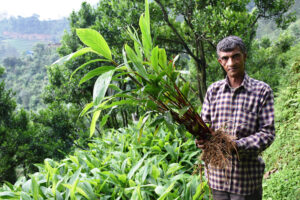
Kathmandu, Sept 19: In line with the ambitious target of producing 15 gigawatts in 10 years and meeting the rising domestic demand for electricity, Nepal needs to increase investments in the energy sector by two- to fourfold, says a World Bank report.
“A twofold to fourfold increase in public and private investment is needed to meet the projected demand in the country and utilise the sector’s export potential,” states the report. “Electricity sector investments will need to accelerate substantially to an average of $1.3 billion to $2.1 billion annually between 2018 and 2040.”
The report, which suggests policy-level reforms to strengthen the institutional capacity of power sector institutions with the view of attracting large-scale investment in the energy sector, has come at a time when Nepal’s foreign direct investment level has fallen by 25.4 percent year-on-year.
As per Nepal Rastra Bank, the amount of direct investment in Nepal declined to Rs13.06 billion in fiscal 2018-19 from Rs17.52 billion in fiscal 2017-18.
The Nepal Electricity Authority estimates that the country will have a surplus of around 8,000 megawatts by 2025 as its generation capacity is expected to reach 10,924 megawatts while peak demand is likely to reach 2,981 megawatts.
Infrastructure experts say the generation and export targets will not be achieved unless the government focuses on implementing policies to facilitate investments in the sector at the earliest.
“The problem is not with the laws, policies and work procedures governing foreign or private investment in the sector, the problem is with the hassle-laden processes that have dissuaded potential investors,” said Anup Kumar Upadhyay, a former secretary at the Ministry of Energy, Water Resources and Irrigation.
According to Upadhyay, Nepal should facilitate domestic and foreign investment in export-oriented projects by stringently monitoring systemic delays by authorities and eliminating social and financial hurdles faced by investors such as local obstructions, risk hedging and profit repatriation.
“It will be important to create an enabling environment for foreign investment and financing to flow into the sector in a sustainable way while managing fiscal commitments and contingent liabilities risk,” states the report issued by the multilateral institution which has financed the construction of high capacity transmission lines and hydel schemes.
According to the World Bank, Nepal needs infrastructure investments of around 10 to 15 percent of the gross domestic product annually for the next 10 years, and the success of these investments will depend on the timely implementation of investment-related legislation that meets good practices.
The report has come at a time when the Finance and Energy ministries are divided over contributions from the ministries and the state-owned power utility to the hedge fund, a financial instrument used as a cushion against currency fluctuations faced by investors who bring investments both in debt and equity in foreign denominations.
Negotiations between the Energy Ministry and a consortium of Chinese and Nepali developers of the 600 megawatt Upper Marshyangdi project including Nepal’s Butwal Power Company have stalled after the ministries locked horns over the terms of the hedging mechanism.
Earlier, the Korean developers of the 216 megawatt Upper Trishuli 1 Hydroelectric Scheme had also faced bureaucratic impediments owing to hedge fund contributions which were sorted out following months-long discussions.
According to independent power producers, there is a funding gap in energy projects, and foreign investors have expressed interest in channelling investments in the sector; but the country lacks a proper risk-sharing mechanism between investors and the government.
“Judging by the foreign direct investment commitments, we can say investors are interested; but the government’s inability to share business risk and assure investors a high level of socio-economic support has deterred the possibilities,” said Kumar Pandey, vice-president of the Independent Power Producers’ Association of Nepal.
Data released by Investment Board Nepal shows that the country received investment pledges amounting to Rs36 billion from China and Rs10 billion from India in 2018. But a large portion of those pledges is yet to materialise in the form of direct investment.
In view of Nepal’s export potential, the report has urged stakeholders to strengthen the enabling conditions for electricity trade with its neighbours by establishing the appropriate legal, regulatory and institutional environment.
The report coincides with the attempts of Nepali energy officials to end the deadlock in negotiations over financing and implementation modalities of the second cross-border transmission line between Nepal and India, and urge their Indian counterparts to establish government policies related to energy banking in India which will allow its power sector regulator to formalise energy exchange between the two countries, which is currently done through mutual agreement. (Source: Prahlad Rijal, The Kathmandu Post)












